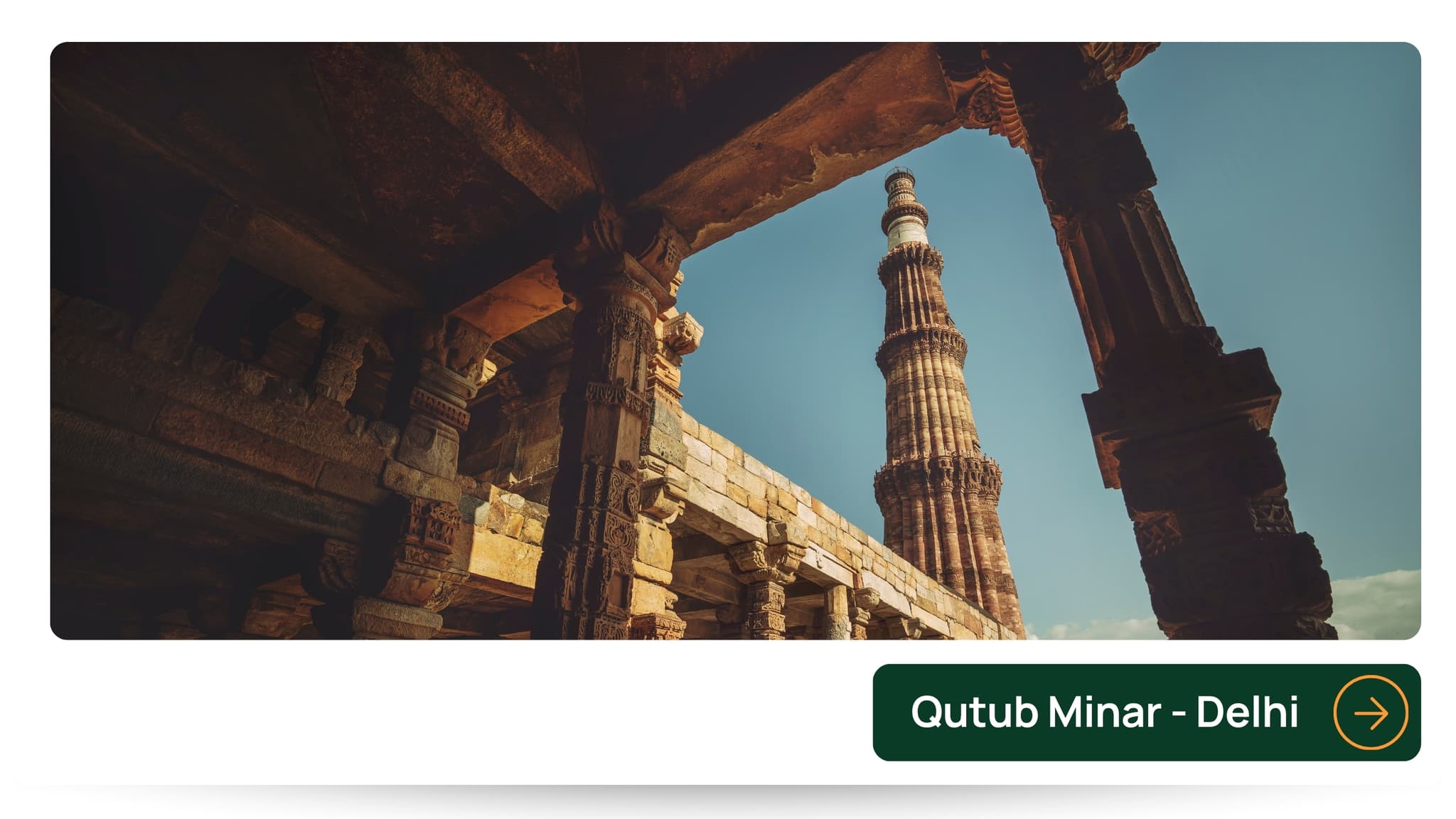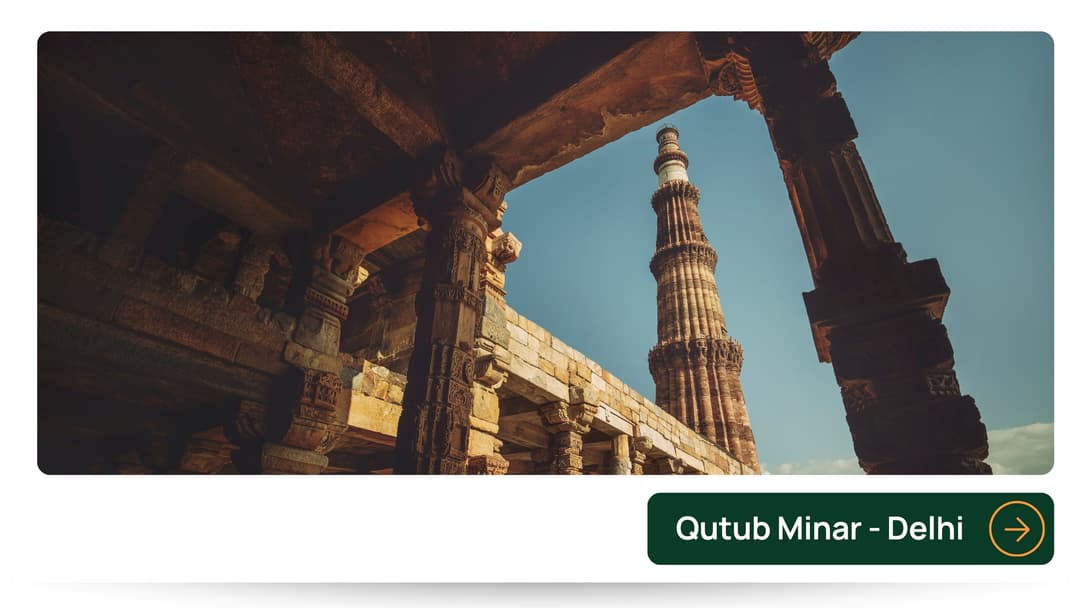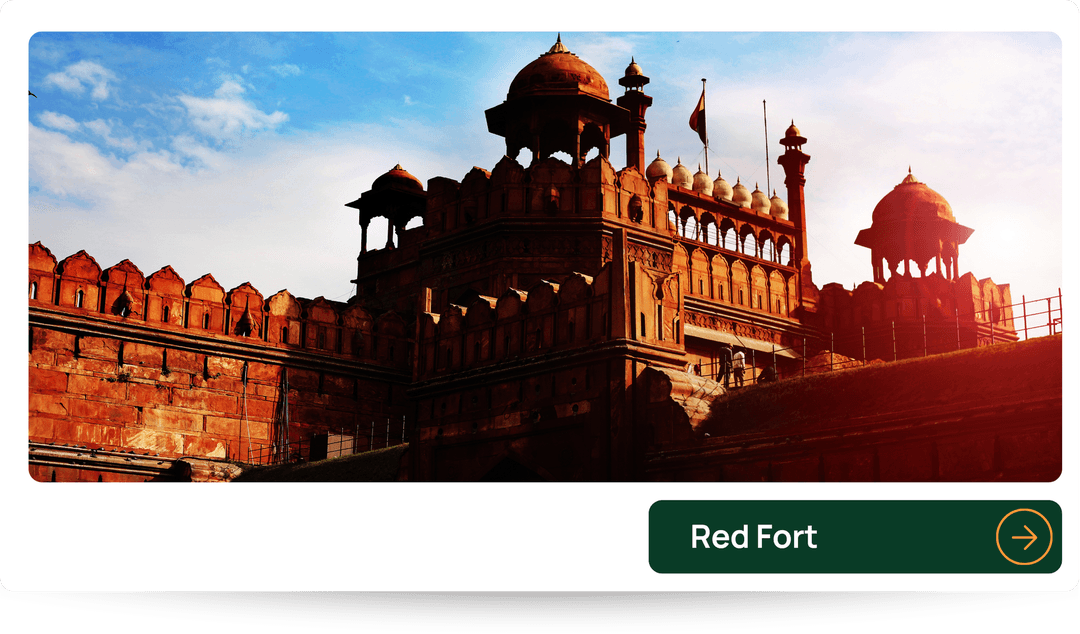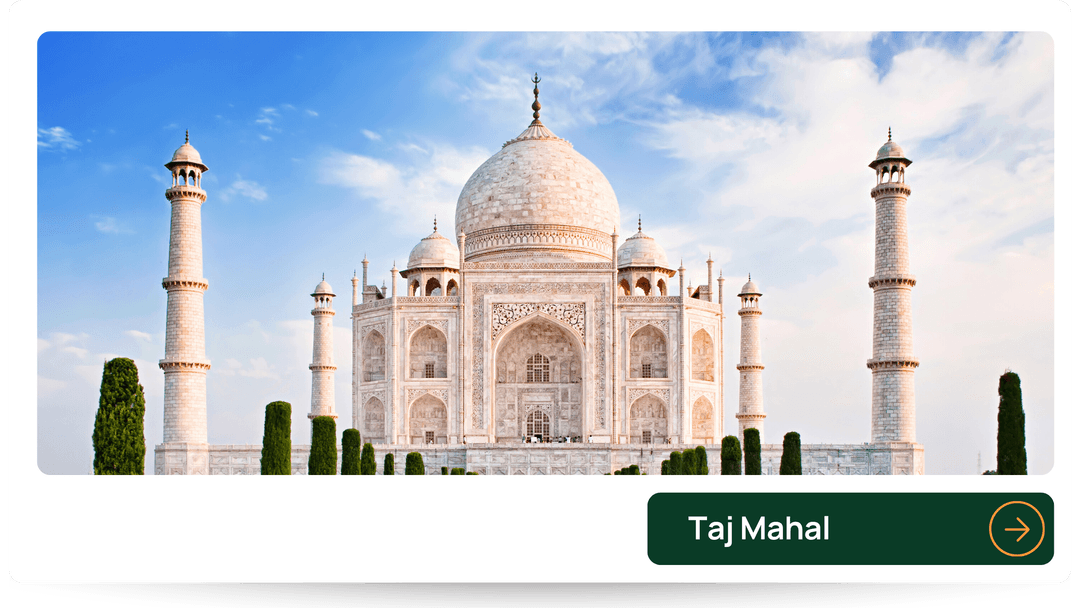Nestled in Mehrauli, the oldest district of New Delhi, the Qutub Complex is more than an architectural treasure, it is a living witness to one of the most significant turning points in India’s history. It marks the birth of the Delhi Sultanate and the beginning of Islam’s expanding influence across the subcontinent.
The Timeless Beauty of the Qutub Complex
Covering an area of five hectares, the Qutub Complex brings together a series of remarkable monuments. At its heart stands the towering Qutub Minar, an iconic structure that dominates the skyline.
Another highlight is the Quwwat-ul-Islam Mosque, the very first mosque built in India. This monument played a crucial role in asserting the presence of Islam in the region.
Image: View of the domes and ruins of the Quwwat-ul-Islam Mosque. The Iron Pillar of Delhi stands before the arched gateway. Source: Photograph by Samuel Bourne, 1866.
Visitors can also admire:
-
The Iron Pillar of Delhi, a 4th-century marvel of metallurgy that has resisted rust for more than 1,600 years.
-
Alai Darwaza, a grand sandstone gateway in red and white, showcasing the mastery of Islamic architecture.
-
Alai Minar, an ambitious but unfinished minaret, originally intended to be twice as tall as the Qutub Minar.
Image: The remaining ruins of the Alai Minar.
Together with several tombs and the ancient Mehrauli forest, these monuments create a cultural landscape where history and nature intertwine.
Qutub Minar – A Symbol of Power and Cultural Synthesis
Recognized by UNESCO as a World Cultural Heritage Site in 1993, the 73-meter-high Qutub Minar is the tallest brick minaret in the world. Beyond its striking height, it carries immense political and cultural meaning.
Historical and Political Significance
Construction began in 1193 under Qutb-ud-din Aibak, founder of the Mamluk Dynasty, the first of the Delhi Sultanates. The tower was erected soon after the defeat of Hindu ruler Prithviraj Chauhan, symbolizing Delhi’s transformation into the new political center.
Qutb al-Din Aibak (1206–1210)
As a minaret, the Qutub Minar was not only a call to prayer but also a declaration of power—signifying the firm establishment of Islam and the dawn of the Delhi Sultanate, a true turning point in Indian history.
Architectural and Artistic Value
The Minar is built in sandstone, adorned with marble inlays, geometric motifs, and Quranic inscriptions. The use of sandstone, known for its durability and natural beauty, combined with marble’s elegance, creates a stunning visual harmony.
Image: Qutb Minar. Source: Indian National Trust for Art and Cultural Heritage (INTACH), Delhi Chapter.
What makes the Qutub Complex especially fascinating is its synthesis of Hindu and Islamic influences:
-
Hindu elements: Columns reused from 27 demolished Hindu and Jain temples still display intricate carvings of deities, apsaras, elephants, lions, and lotuses—hallmarks of Hindu art.
-
Islamic elements: The soaring tapering form of the minaret, the red-and-white sandstone, the use of pointed arches, Arabic calligraphy, and abstract arabesques all reflect the aesthetics and principles of Islamic architecture.
This blending of traditions turned the Qutub Complex into a powerful testimony of cultural exchange, where Hindu symbolism met Islamic abstraction.
Cultural and Religious Significance
Beyond the Minar, the complex includes India’s first mosque: Quwwat-ul-Islam and the Iron Pillar, a relic of ancient India’s metallurgical brilliance. These layers of monuments reveal how faiths and civilizations intersected, making the Qutub Complex a unique cultural space rather than a single monument.
Why UNESCO Recognized the Qutub Complex
The Qutub Minar and its surrounding monuments were inscribed on the UNESCO World Heritage list under two criteria:
-
Criterion (iv): An outstanding example illustrating a significant stage in human history.
-
Criterion (vi): Directly associated with cultural traditions and events that shaped the spread of Islam in India.
A Journey Beyond Stories and Pictures
The Qutub Complex is not only a magnificent piece of architecture but also a symbol of the beginning of a new era, where two great civilizations met and blended into one heritage.
No photo or online description can replace the awe you feel when standing before the Qutub Minar and tracing the artistry of its details. To truly experience this wonder, plan your journey and see it for yourself. Apply for an Indian Tourist eVisa today, and turn your dream trip into reality.












